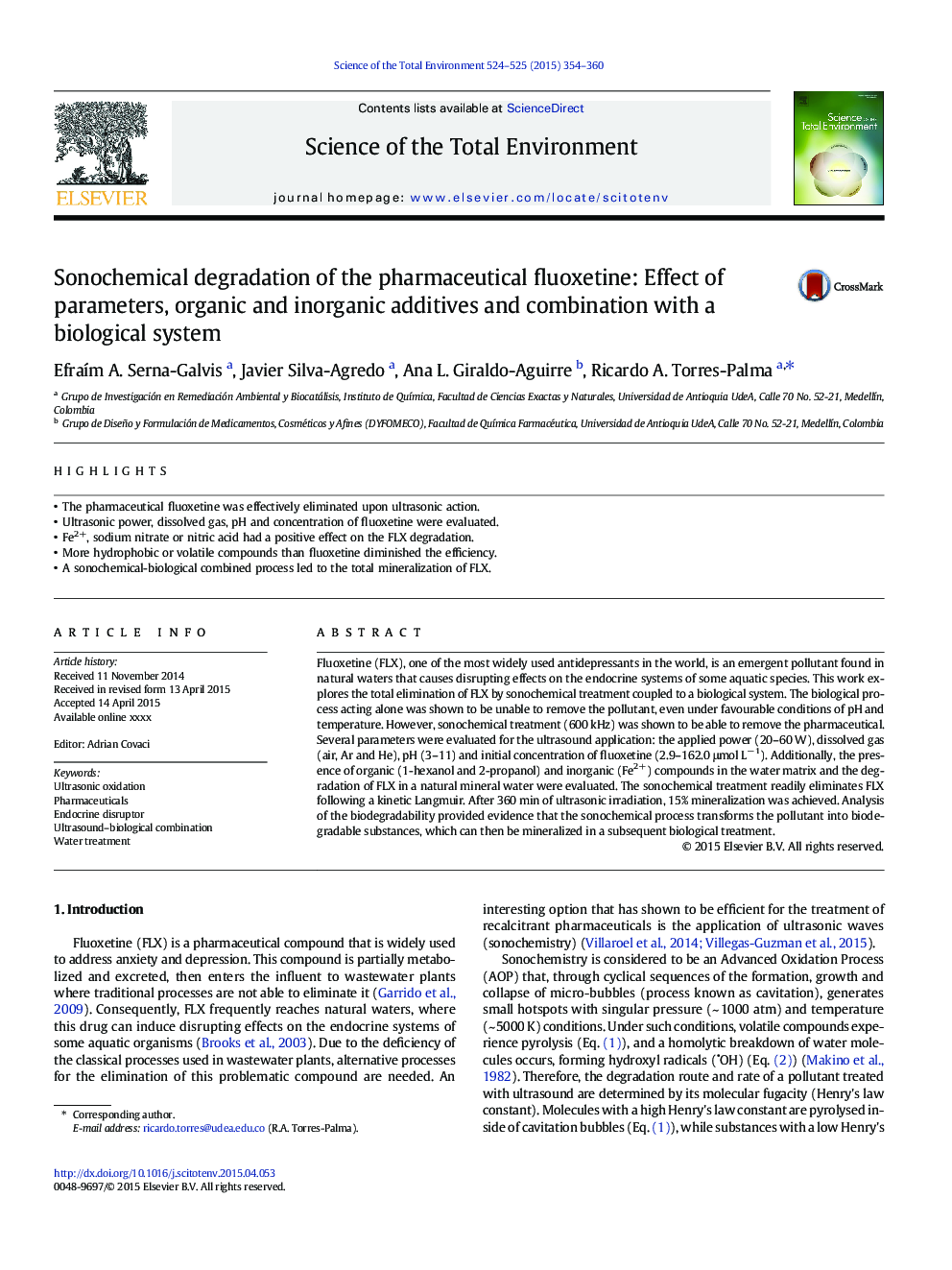| Article ID | Journal | Published Year | Pages | File Type |
|---|---|---|---|---|
| 6326769 | Science of The Total Environment | 2015 | 7 Pages |
Abstract
Fluoxetine (FLX), one of the most widely used antidepressants in the world, is an emergent pollutant found in natural waters that causes disrupting effects on the endocrine systems of some aquatic species. This work explores the total elimination of FLX by sonochemical treatment coupled to a biological system. The biological process acting alone was shown to be unable to remove the pollutant, even under favourable conditions of pH and temperature. However, sonochemical treatment (600 kHz) was shown to be able to remove the pharmaceutical. Several parameters were evaluated for the ultrasound application: the applied power (20-60 W), dissolved gas (air, Ar and He), pH (3-11) and initial concentration of fluoxetine (2.9-162.0 μmol Lâ 1). Additionally, the presence of organic (1-hexanol and 2-propanol) and inorganic (Fe2 +) compounds in the water matrix and the degradation of FLX in a natural mineral water were evaluated. The sonochemical treatment readily eliminates FLX following a kinetic Langmuir. After 360 min of ultrasonic irradiation, 15% mineralization was achieved. Analysis of the biodegradability provided evidence that the sonochemical process transforms the pollutant into biodegradable substances, which can then be mineralized in a subsequent biological treatment.
Related Topics
Life Sciences
Environmental Science
Environmental Chemistry
Authors
EfraÃm A. Serna-Galvis, Javier Silva-Agredo, Ana L. Giraldo-Aguirre, Ricardo A. Torres-Palma,
